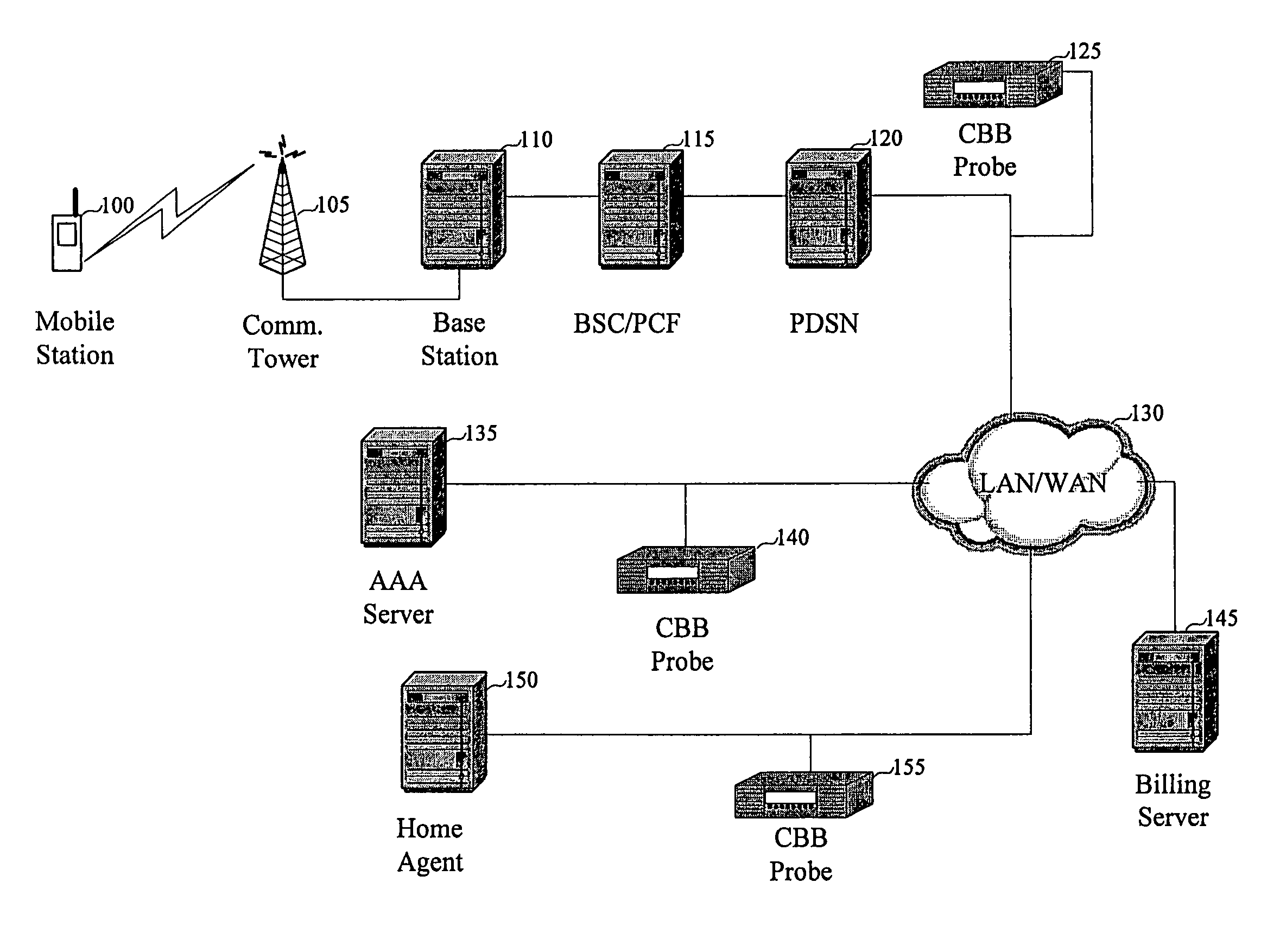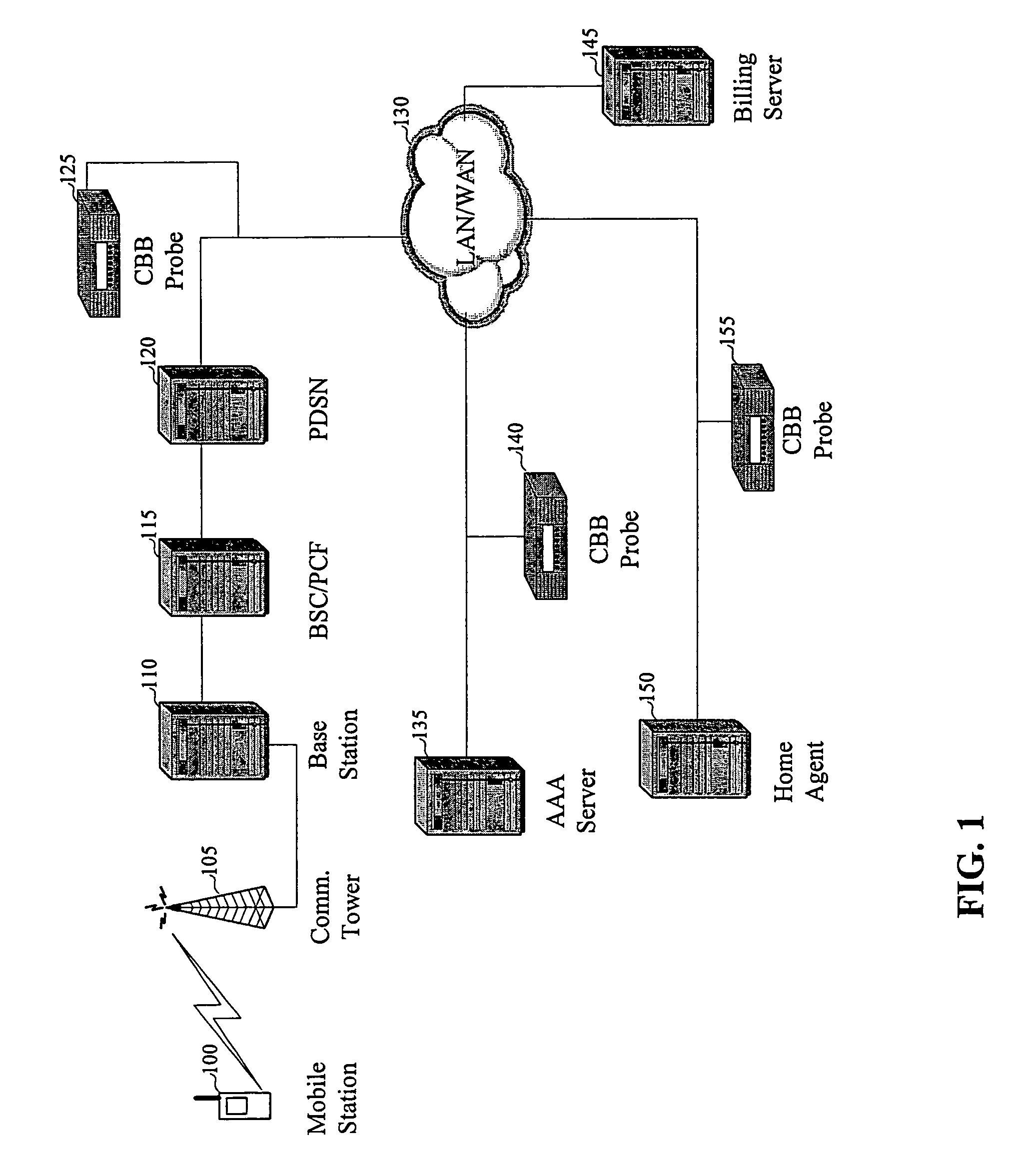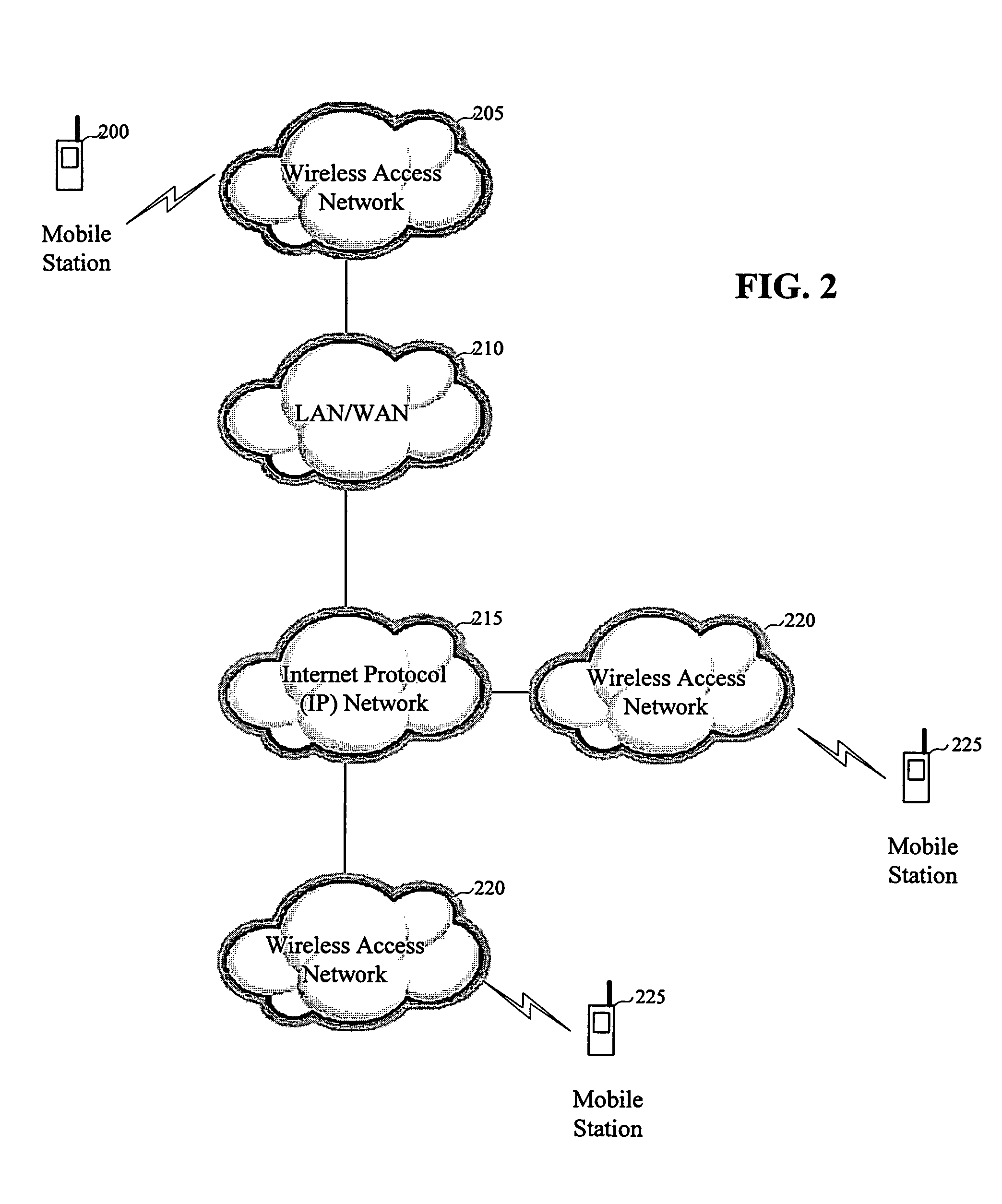Client-based context-based billing for wireless networks
- Summary
- Abstract
- Description
- Claims
- Application Information
AI Technical Summary
Benefits of technology
Problems solved by technology
Method used
Image
Examples
first embodiment
[0021]The relevant data to be passed through the network illustrated in FIGS. 2 and 3 will now be discussed with respect to the The MS 200 contains at least a part of a billing client that detects event triggers generated by an application operating on the MS 200 through the use of Application Programmer Interfaces (APIs). Because the present invention is context-based rather than content-based, both applications that access the wireless network and those that do not can generate event triggers. Many different events can generate an event trigger. The following is a partial list of events that can generate event triggers: initiation / termination of a call, transmission / reception of a text message, transmission of a data request, reception of requested data, and initiation / termination of a client-based application. The above list of events is exemplary only and is not exhaustive.
[0022]Furthermore, the present invention allows the same application to operate on mobile stations provide...
third embodiment
[0032]Because the third embodiment detects the transmission quality, this transmission quality can be compared to a subscriber standard for transmission quality based upon the QoS for which the subscriber has paid. The billing client can delete that portion of the billing record coresponding to the billing events for which the transmission quality does not exceed the the subscriber standard. Alternatively, the UMS 260 can delete that portion of the billing record coresponding to the billing events for which the transmission quality does not exceed the the subscriber standard.
[0033]In summary, the billing record includes a number of optional data fields: starting and ending times for data transmission and reception, the quantity of data (e.g., 42.7 KB), the source of the data (e.g., wireless subscriber #289 for a cellular telephone call or HomeTownNews.com for a wireless Internet browser application), the latency (e.g., 17 mSec), the jitter (e.g., 3 mSec), errors (e.g., thirteen drop...
PUM
 Login to View More
Login to View More Abstract
Description
Claims
Application Information
 Login to View More
Login to View More - R&D
- Intellectual Property
- Life Sciences
- Materials
- Tech Scout
- Unparalleled Data Quality
- Higher Quality Content
- 60% Fewer Hallucinations
Browse by: Latest US Patents, China's latest patents, Technical Efficacy Thesaurus, Application Domain, Technology Topic, Popular Technical Reports.
© 2025 PatSnap. All rights reserved.Legal|Privacy policy|Modern Slavery Act Transparency Statement|Sitemap|About US| Contact US: help@patsnap.com



